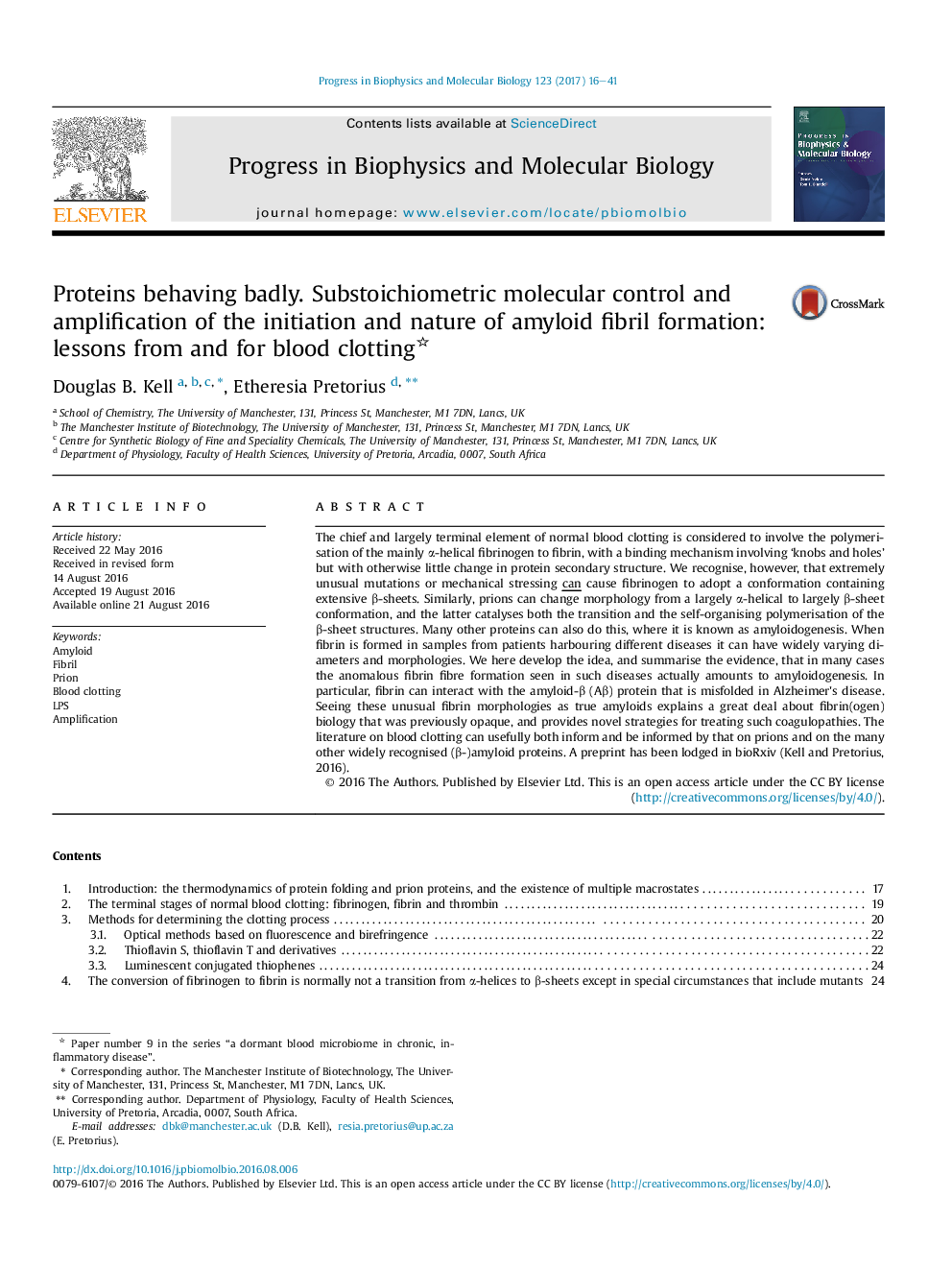| Article ID | Journal | Published Year | Pages | File Type |
|---|---|---|---|---|
| 5519929 | Progress in Biophysics and Molecular Biology | 2017 | 26 Pages |
The chief and largely terminal element of normal blood clotting is considered to involve the polymerisation of the mainly α-helical fibrinogen to fibrin, with a binding mechanism involving 'knobs and holes' but with otherwise little change in protein secondary structure. We recognise, however, that extremely unusual mutations or mechanical stressing can cause fibrinogen to adopt a conformation containing extensive β-sheets. Similarly, prions can change morphology from a largely α-helical to largely β-sheet conformation, and the latter catalyses both the transition and the self-organising polymerisation of the β-sheet structures. Many other proteins can also do this, where it is known as amyloidogenesis. When fibrin is formed in samples from patients harbouring different diseases it can have widely varying diameters and morphologies. We here develop the idea, and summarise the evidence, that in many cases the anomalous fibrin fibre formation seen in such diseases actually amounts to amyloidogenesis. In particular, fibrin can interact with the amyloid-β (Aβ) protein that is misfolded in Alzheimer's disease. Seeing these unusual fibrin morphologies as true amyloids explains a great deal about fibrin(ogen) biology that was previously opaque, and provides novel strategies for treating such coagulopathies. The literature on blood clotting can usefully both inform and be informed by that on prions and on the many other widely recognised (β-)amyloid proteins. A preprint has been lodged in bioRxiv (Kell and Pretorius, 2016).
